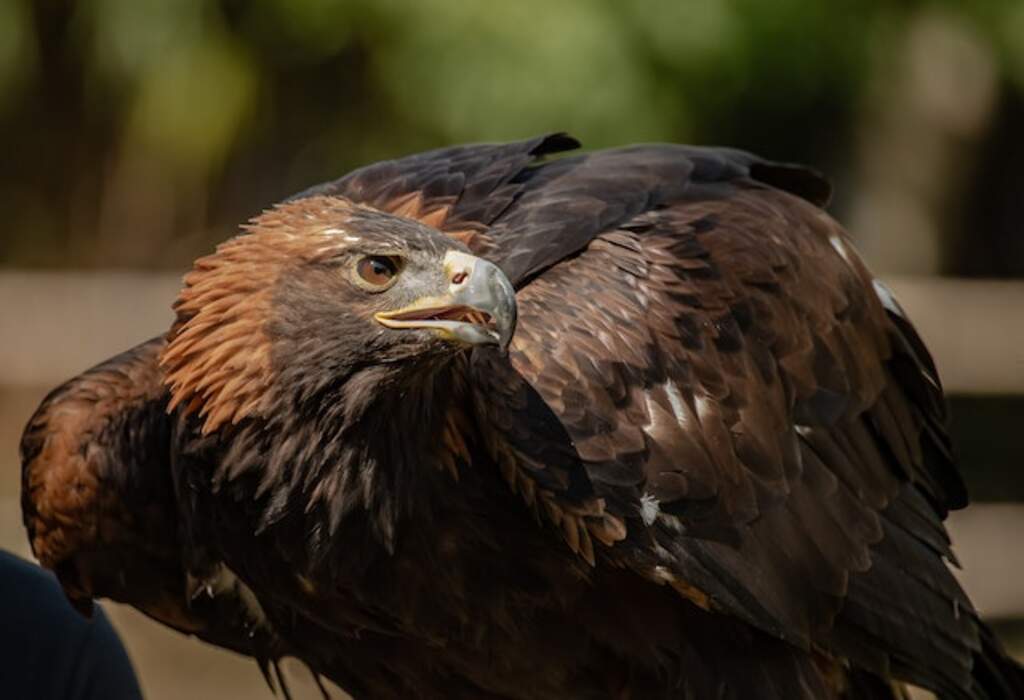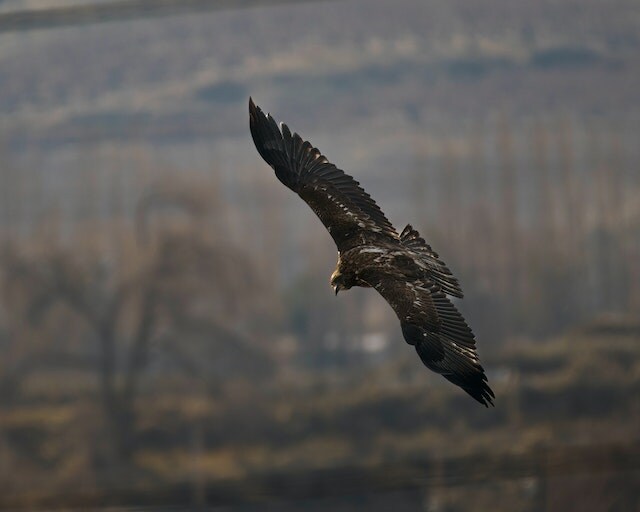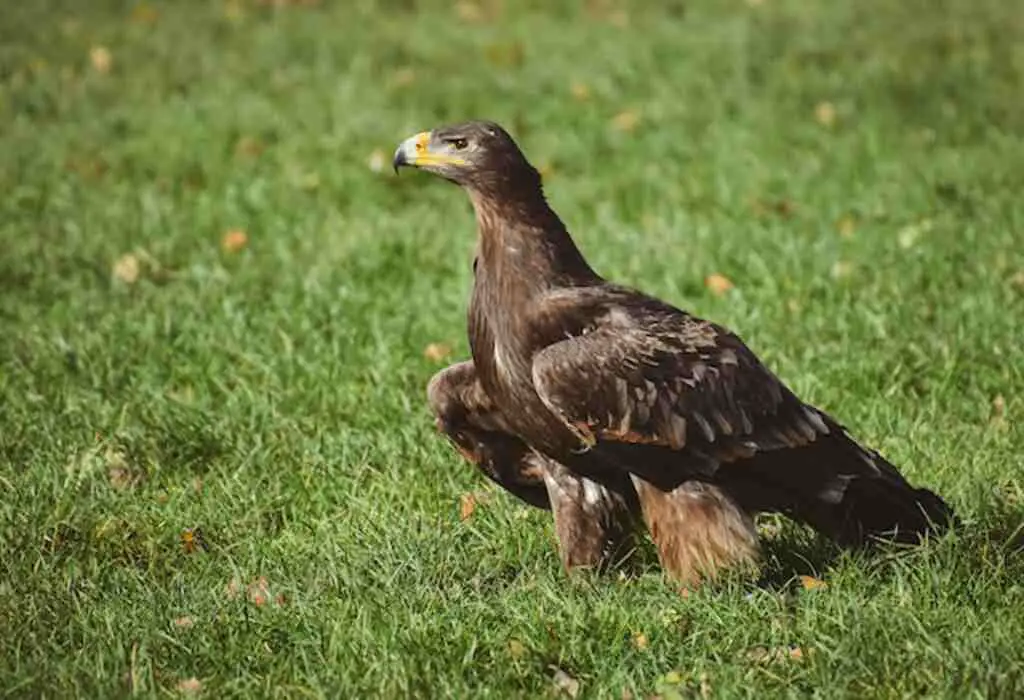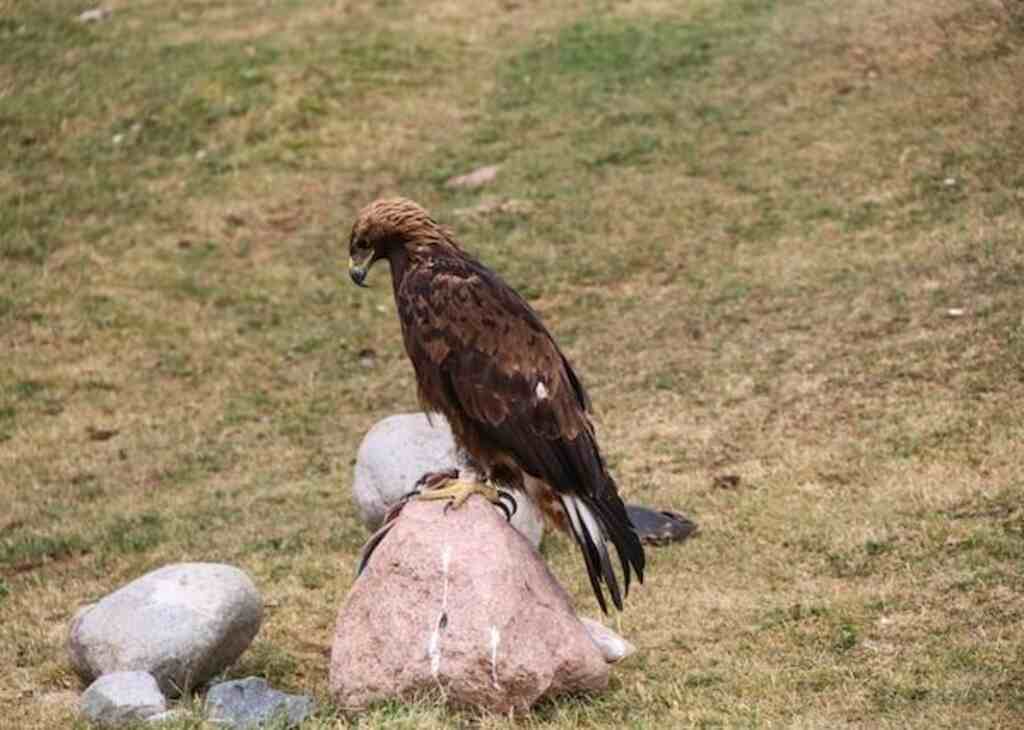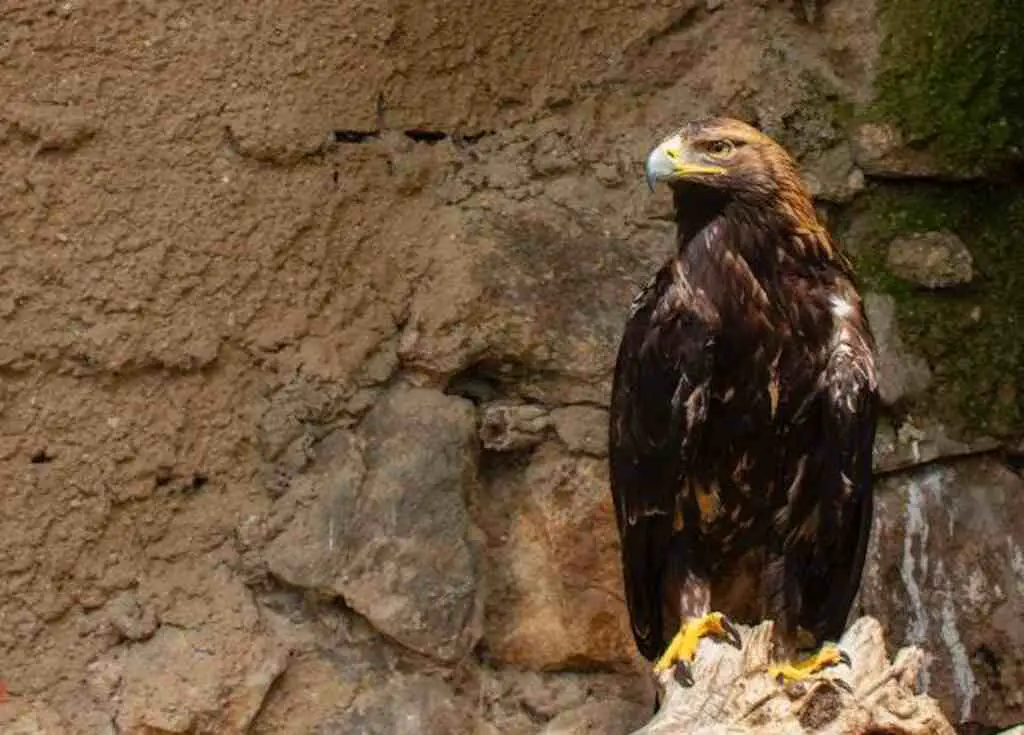In the realm of the wild, one majestic creature soars above all others, captivating the imagination with its grandeur and strength. The golden eagle, a symbol of power and freedom, is a marvel of nature.
Understanding the behavioral patterns of these magnificent birds is a fascinating endeavor, as it unveils the secrets of their daily lives.
This article delves into the question of when golden eagles are most active, shedding light on their characteristics, behaviors, and the factors that influence their activity.
By examining their hunting techniques, courtship rituals, nesting habits, and parental care, we gain valuable insights into the world of these regal creatures.
Moreover, this article explores the challenges faced by golden eagles and the conservation efforts aimed at ensuring their survival.
For those who yearn to observe these majestic creatures in their natural habitat, practical tips for successful encounters are also provided.
Join us on this scientific journey into the realm of the golden eagle, where freedom and power unite in perfect harmony.
Table of Contents
- 1 Key Takeaways
- 2 When Are Golden Eagles Most Active
- 3 Characteristics and Behaviors of Golden Eagles
- 4 Daily Activity Patterns of Golden Eagles
- 5 Seasonal Variations in Golden Eagle Activity
- 6 Factors Influencing Golden Eagle Activity
- 7 Golden Eagle Hunting Techniques and Strategies
- 8 Golden Eagle Communication and Vocalizations
- 9 Golden Eagle Courtship and Mating Behavior
- 10 Golden Eagle Nesting Habits and Parental Care
- 11 Conservation Challenges and Efforts for Golden Eagles
- 12 Tips for Observing Golden Eagles in the Wild
- 13 Frequently Asked Questions
- 13.1 How do golden eagles communicate with each other during hunting?
- 13.2 What are the specific factors that influence the hunting activity of golden eagles?
- 13.3 How often do golden eagles change their nests during the nesting season?
- 13.4 What are the main conservation challenges faced by golden eagles and the efforts being made to address them?
- 13.5 Are there any specific tips for observing golden eagles in their natural habitat during different seasons?
- 14 Conclusion
- 15 Author
Key Takeaways
- Golden eagles are most active during the early morning and late afternoon, which are their peak hunting times.
- Factors such as prey availability, weather conditions, and the breeding season influence the daily activity patterns of golden eagles.
- Golden eagles engage in socializing and interaction with other eagles during migration and while searching for food sources.
- Environmental conditions and weather, such as temperature and wind, play a significant role in determining golden eagle activity levels.
When Are Golden Eagles Most Active
Golden eagles are most active during the daytime, especially in the early morning and late afternoon. As diurnal raptors, they hunt for prey, engage in territorial displays, and soar the skies to find food during these periods.
Characteristics and Behaviors of Golden Eagles
The activity patterns of golden eagles vary throughout the year, with peak activity occurring during certain times corresponding to their breeding and hunting behaviors.
Golden eagles are known for their impressive migration patterns, with some individuals traveling thousands of miles between their breeding and wintering grounds.
During migration, golden eagles demonstrate a strong sense of direction and utilize thermal updrafts for efficient soaring.
When it comes to foraging, golden eagles employ various techniques such as still-hunting, perch-hunting, and aerial hunting.
They possess keen eyesight and are capable of spotting prey from great distances.
Golden eagles are opportunistic hunters and will target a wide range of prey, including small mammals, birds, reptiles, and even carrion.
These foraging behaviors and migration patterns contribute to the overall activity patterns of golden eagles.
Moving onto the next section about the daily activity patterns of golden eagles…
Daily Activity Patterns of Golden Eagles
The daily activity patterns of Golden Eagles encompass various aspects of their behavior.
One key point is their hunting behavior and peak activity times. Golden Eagles are known to be diurnal predators, with their peak hunting activity occurring during the early morning and late afternoon.
Another important aspect is their nesting and breeding season. Golden Eagles typically nest in high cliffs or tall trees, and they engage in breeding activities during the spring and summer months.
Lastly, Golden Eagles also engage in socializing and interaction with other eagles.
They are generally territorial birds, but they may interact with other eagles during migration or when searching for food sources.
Hunting Behavior and Peak Activity Times
Golden eagles exhibit distinct hunting behavior and display peak activity times. These birds of prey are known for their exceptional hunting skills, which are honed through years of experience and instinct.
Peak hunting activity usually occurs during the early morning and late afternoon, when golden eagles take advantage of optimal lighting conditions and thermals to soar and search for prey.
Their daily patterns are influenced by factors such as prey availability, weather conditions, and the breeding season.
During the breeding season, golden eagles may alter their hunting behavior and focus more on defending their territory and providing food for their young.
This transition from hunting to nesting and breeding season showcases the remarkable adaptability and versatility of these majestic birds.
Nesting and Breeding Season
During the nesting and breeding season, golden eagles undergo significant behavioral changes as they shift their focus towards defending their territory and providing food for their offspring.
Nesting behavior is a crucial aspect of their reproductive strategy, and golden eagles typically construct large nests made of sticks and vegetation in elevated locations such as cliffs or tall trees.
The breeding success of golden eagles depends on various factors, including the availability of suitable nesting sites and the availability of prey for the parents and their young.
Golden eagles are known to mate for life, and both parents actively participate in incubating the eggs and caring for the chicks.
This cooperative behavior enhances their breeding success and ensures the survival of their offspring.
As the nesting season comes to an end, the golden eagles transition into socializing and interacting with other eagles, establishing territories, and engaging in territorial displays to defend their space.
Socializing and Interaction with Other Eagles
Socializing and interacting with other eagles is a fundamental aspect of the golden eagle’s post-nesting behavior, resembling a bustling marketplace where eagles converge to establish social connections and assert their territorial boundaries.
These interactions are characterized by a complex repertoire of behaviors, including aerial displays, calling, and physical confrontations.
Socializing behavior serves multiple purposes, such as mate selection, information exchange, and maintaining social hierarchies within eagle populations.
Territorial disputes often arise during these interactions, as eagles fiercely defend their nesting territories against intruders.
These disputes can escalate into intense aerial battles, with eagles locking talons and engaging in dramatic displays of dominance.
It is during these social interactions that golden eagles are most active, as they engage in high-energy behaviors aimed at strengthening social bonds and maintaining territorial integrity.
This socializing and interaction phase is only one aspect of the golden eagle’s post-nesting behavior.
However, seasonal variations in golden eagle activity also play a significant role in shaping their overall behavior and movement patterns throughout the year.
Seasonal Variations in Golden Eagle Activity
The seasonal variations in golden eagle activity are characterized by distinct behaviors in different seasons.
During spring and summer, golden eagles exhibit specific behaviors such as courtship, nesting, and rearing of young.
In fall, golden eagles engage in migration patterns, often flying long distances to their wintering grounds.
In winter, golden eagles employ survival strategies such as seeking out areas with abundant prey and adapting their hunting techniques to the challenges of the season.
Spring and Summer Behavior
Spring and summer bring about a heightened level of activity in golden eagles. During the spring, golden eagles engage in their annual migration, as they move from their wintering grounds to their breeding territories.
This period of migration is characterized by increased movement and activity as the eagles navigate across vast distances.
Additionally, territorial disputes among golden eagles are common during the spring and summer months.
As they establish and defend their breeding territories, golden eagles engage in intense aerial displays and vocalizations to assert dominance.
These displays serve as a means of communication and can be observed as the eagles soar through the skies, engaging in acrobatic maneuvers.
The spring and summer behavior of golden eagles showcases their adaptability, resilience, and natural instincts.
As the fall migration patterns approach, golden eagles begin to prepare for the next phase of their annual cycle.
Fall Migration Patterns
During the fall migration, golden eagles exhibit a strong sense of direction and utilize navigational cues such as magnetic fields to guide their journey, as demonstrated by a study conducted by researchers at a leading ornithology institute.
The fall migration routes of golden eagles vary depending on their breeding grounds, with some populations traveling thousands of miles from northern latitudes to reach their wintering areas in the southern regions.
Timing and patterns of fall migration can also differ among individuals and populations, with some eagles starting their journey as early as August and others not beginning until October.
These migration patterns play a crucial role in the population dynamics of golden eagles, as they impact the distribution and abundance of individuals across their range.
Understanding these fall migration routes and their timing is essential for conservation efforts aimed at protecting golden eagle populations.
Transitioning into the subsequent section, exploring their winter survival strategies, provides further insight into the remarkable adaptations of these majestic birds.
Winter Survival Strategies
Winter survival strategies of golden eagles include finding suitable food sources, seeking shelter in protected areas, and conserving energy through thermoregulation.
To ensure their survival during winter, golden eagles employ various techniques that allow them to adapt to the harsh conditions.
Firstly, they rely on their keen eyesight to locate potential food sources such as small mammals and carrion.
Secondly, golden eagles often seek shelter in areas with dense vegetation or rocky outcrops, which provide protection from harsh winds and precipitation.
Additionally, these birds conserve energy by reducing their activity levels and lowering their metabolic rate. This allows them to endure prolonged periods of food scarcity and extreme cold temperatures.
Overall, these winter survival techniques enable golden eagles to navigate through the challenging conditions and increase their chances of survival.
Factors influencing golden eagle activity include weather conditions, food availability, and mating behaviors.
Factors Influencing Golden Eagle Activity
The activity of golden eagles is influenced by various factors, including environmental conditions and weather. For instance, these birds are more active during periods of favorable weather conditions such as mild temperatures and clear skies.
Additionally, the availability of prey plays a crucial role in determining the activity levels of golden eagles. Higher prey abundance leads to increased hunting activity and foraging behavior.
Lastly, human disturbance and habitat changes can significantly impact golden eagle activity.
Activities such as construction, logging, and recreational activities can cause disturbance and displacement of these birds, leading to reduced activity levels in affected areas.
Environmental Conditions and Weather
Environmental conditions and weather play a significant role in determining the level of activity of golden eagles.
These majestic birds are influenced by a variety of environmental factors, including temperature, wind, and precipitation.
Golden eagles are most active during periods of mild weather, when temperatures are moderate and wind speeds are low.
They tend to be less active during extreme weather conditions such as heavy rain, snow, or strong winds. The daily patterns of golden eagle activity also vary depending on environmental conditions.
They are typically more active during the early morning and late afternoon, when temperatures are cooler and winds are calmer. As the day progresses and temperatures rise, their activity level tends to decrease.
Understanding the influence of environmental conditions and weather on golden eagle activity is crucial for conservation efforts and managing their habitats.
Transitioning into the subsequent section about the availability of prey, these factors also play a role in determining the eagles’ hunting success and food availability.
Availability of Prey
One crucial factor for golden eagle activity and hunting success is the availability of prey. Golden eagles are opportunistic hunters, and their hunting patterns are closely tied to the abundance and distribution of their prey. The availability of prey can vary depending on factors such as season, location, and ecosystem dynamics.
Seasonal Variation:
- In winter, golden eagles primarily feed on small mammals such as rabbits and hares, which are more abundant during this time.
- During the breeding season, golden eagles shift their focus to larger prey like ground squirrels and prairie dogs, which provide enough energy for raising their young.
- In the summer, golden eagles may also take advantage of the availability of waterfowl and carrion.
Geographic Variation:
- Golden eagles living in mountainous regions may rely on mountain goats, bighorn sheep, and marmots as their main prey.
- Coastal populations may hunt seabirds and fish.
Ecosystem Dynamics:
- Golden eagles are known to follow migratory herds, such as caribou or wildebeest, to take advantage of the abundance of prey.
Understanding the prey availability and hunting patterns of golden eagles is crucial for effective conservation efforts and management strategies.
Human disturbance and habitat changes can significantly impact prey availability and subsequently affect golden eagle populations.
Human Disturbance and Habitat Changes
Human disturbance and habitat changes can have a significant impact on the availability of prey and subsequently affect the hunting success and activity levels of the golden eagle.
Human activities such as urban development, agriculture expansion, and deforestation contribute to habitat loss, which can disrupt the natural balance of prey species.
As a result, golden eagles may struggle to find enough food to sustain themselves and their offspring.
Furthermore, habitat fragmentation caused by human activities can lead to the isolation of prey populations, making it more difficult for golden eagles to locate and capture their preferred prey.
These changes in prey availability can cause golden eagles to alter their hunting strategies and behavior, resulting in decreased activity levels during certain times of the day.
Understanding the impact of human disturbance and habitat changes on golden eagle hunting patterns is crucial for conservation efforts aimed at preserving this majestic species.
Next, we will explore the fascinating hunting techniques and strategies employed by golden eagles.
Golden Eagle Hunting Techniques and Strategies
Golden eagles exhibit exceptional hunting techniques and strategies to ensure their success in capturing prey. Their hunting techniques are highly specialized and vary depending on the type of prey they are targeting.
Golden eagles are known for their incredible speed and agility in flight, allowing them to swoop down on their prey with precision and accuracy.
They have powerful talons that can grasp and hold onto their prey, and their beaks are sharp and strong, enabling them to tear apart their catch.
Golden eagles are also skilled at hunting in different terrains and habitats, adapting their techniques to suit the environment.
They may use a combination of aerial hunting and ground hunting, depending on the availability of prey.
Golden eagle hunting patterns are influenced by factors such as prey abundance, weather conditions, and seasonal variations.
As we transition into the subsequent section about golden eagle communication and vocalizations, it is important to understand how these hunting techniques and strategies are essential for their survival and reproduction.
Golden Eagle Communication and Vocalizations
The communication and vocalizations of golden eagles play a crucial role in their social interactions and territorial defense, with distinctive calls being used to communicate with other eagles in their vicinity.
For instance, a study conducted in the Rocky Mountains found that when a golden eagle was approaching the territory of another eagle, it emitted a series of high-pitched screeches, which acted as a warning signal to the resident eagle to stay away and avoid potential conflicts.
These vocalizations are not only used for territorial defense but also for communication within the social hierarchy of golden eagles.
Different calls and vocal patterns are used to establish dominance, attract mates, and coordinate hunting strategies.
Understanding the intricacies of golden eagle vocalizations and communication patterns provides valuable insights into their behavior and social dynamics.
Moving forward to the subsequent section about golden eagle courtship and mating behavior, the vocalizations continue to play a significant role in these processes.
Golden Eagle Courtship and Mating Behavior
Courtship and mating behavior in golden eagles involves a complex series of displays, including aerial acrobatics, mutual circling, and vocalizations, which serve to establish pair bonds and assess the suitability of potential mates.
During the golden eagle breeding season, which typically occurs in late winter or early spring, males and females engage in elaborate courtship rituals.
These rituals often begin with a display of aerial courtship, in which the male and female engage in breathtaking acrobatics, such as soaring, diving, and chasing each other through the sky.
This display not only showcases the agility and strength of the eagles but also allows them to assess each other’s fitness as potential mates.
Mutual circling is another common courtship behavior, where the male and female fly in tight circles around each other, often accompanied by vocalizations.
These vocalizations include high-pitched whistles, chattering calls, and harsh screams, which further strengthen the pair bond and communicate the eagles’ readiness to mate.
Transitioning to the subsequent section about golden eagle nesting habits and parental care, the courtship and mating behaviors ultimately lead to the establishment of a strong bond between the male and female eagles, setting the stage for successful nesting and rearing of young.
Golden Eagle Nesting Habits and Parental Care
Nesting and nurturing, the golden eagle exhibits exceptional parental care, ensuring the survival and development of their offspring.
Golden eagle nesting success is dependent on several factors, including the availability of suitable nesting sites and the abundance of prey.
These majestic birds typically build their large nests, called eyries, on cliffs or in tall trees, providing a secure environment for their young.
The female golden eagle lays one to four eggs, with an incubation period of around 43 to 45 days. Both parents take turns incubating the eggs and providing food for the chicks once they hatch.
The golden eagle chick development is a gradual process, with the young birds acquiring their flight feathers and independence over several months.
This remarkable level of parental care contributes to the species’ success in raising healthy offspring.
Transitioning to the subsequent section about conservation challenges and efforts for golden eagles, understanding their nesting habits and parental care is crucial for implementing effective conservation strategies.
Conservation Challenges and Efforts for Golden Eagles
Conservation challenges for golden eagles arise from various anthropogenic factors that pose threats to their populations and habitats. Efforts to conserve golden eagles focus on mitigating these challenges and reversing population decline.
- Habitat loss: The conversion of natural habitats into agricultural lands or urban areas reduces suitable nesting and foraging sites for golden eagles. Conservation efforts involve identifying and protecting critical habitat areas.
- Human disturbance: Activities such as outdoor recreation, industrial development, and construction can disrupt golden eagle nesting and foraging behaviors. Conservation strategies include establishing buffer zones and implementing regulations to minimize disturbance.
- Electrocution and collisions: Golden eagles are vulnerable to electrocution from power lines and collisions with wind turbines. Conservation efforts involve retrofitting power poles and siting wind turbines away from important eagle habitats.
By addressing these conservation challenges, we can ensure the long-term survival of golden eagles in the wild. Transitioning into the subsequent section about observing golden eagles in the wild, it is important to understand their habitat requirements and behavior patterns.
Tips for Observing Golden Eagles in the Wild
To successfully observe the behavior of golden eagles in their natural habitat, it is essential to possess a thorough understanding of their preferred foraging areas and migration patterns.
Observing techniques for golden eagles involve finding vantage points that provide a clear view of their flight paths and perching locations.
It is important to remain still and quiet, as any sudden movements or loud noises can startle the eagles and disrupt their natural behavior.
Additionally, using binoculars or a spotting scope can help to observe the eagles from a safe distance without causing disturbance.
Conservation efforts for golden eagles include protecting their nesting sites, minimizing human disturbance in their habitats, and reducing the use of pesticides that can harm their prey populations.
By following these techniques and supporting conservation efforts, observers can have the opportunity to witness the majestic behavior of golden eagles in the wild.
| Observing Techniques | Conservation Efforts |
|---|---|
| Find vantage points | Protect nesting sites |
| Remain still and quiet | Minimize human disturbance |
| Use binoculars or spotting scope | Reduce pesticide use |
| Observe from a safe distance | Support conservation efforts |
Frequently Asked Questions
How do golden eagles communicate with each other during hunting?
Golden eagles communicate with each other during hunting through a variety of vocalizations. These vocalizations serve as means of coordinating their hunting strategies, such as locating prey, marking territory, and maintaining group cohesion.
What are the specific factors that influence the hunting activity of golden eagles?
Various factors influence the hunting activity of golden eagles. These include weather conditions, prey availability, territoriality, and reproductive status. Golden eagle hunting behavior is shaped by a combination of these external and internal factors.
How often do golden eagles change their nests during the nesting season?
Golden eagles may change their nests during the nesting season, a behavior known as nest shifting. This behavior is influenced by factors such as predation risk, disturbance, and availability of suitable nesting sites.
What are the main conservation challenges faced by golden eagles and the efforts being made to address them?
Conservation strategies for Golden Eagles aim to address population decline. Challenges include habitat loss, electrocution from power lines, and illegal shooting. Efforts focus on habitat protection, power line retrofitting, and public education to ensure their survival.
Are there any specific tips for observing golden eagles in their natural habitat during different seasons?
Observing techniques for Golden Eagles in their natural habitat vary depending on the season. The best time to observe them is during the breeding season in spring, as they are most active in establishing territories and performing courtship displays.
Conclusion
In conclusion, understanding the activity patterns of golden eagles is crucial for their conservation and management.
Golden eagles are most active during the day, with peak activity occurring in the morning and late afternoon.
Their activity levels vary seasonally, with higher activity during the breeding season. Factors such as weather conditions and prey availability influence their activity.
Golden eagles employ various hunting techniques and engage in courtship and mating behaviors to ensure reproductive success.
Conservation efforts are essential to protect their nesting habitats and promote their long-term survival.
Observing golden eagles in the wild requires patience and a keen eye. As the saying goes, ‘The early bird catches the worm,’ so early morning observations are often the most rewarding.


